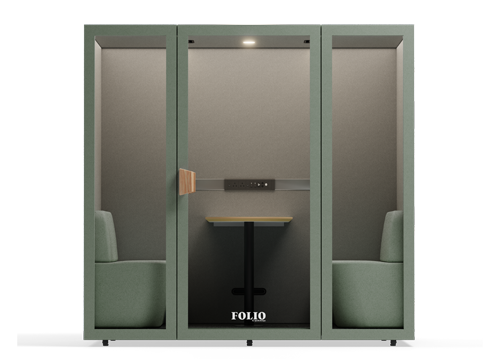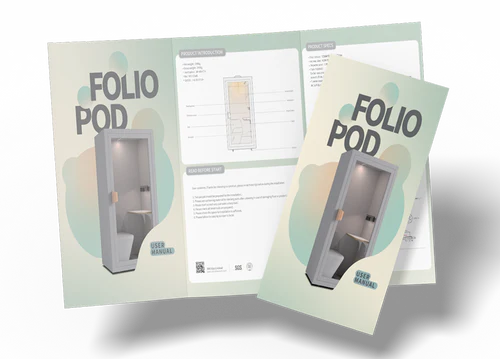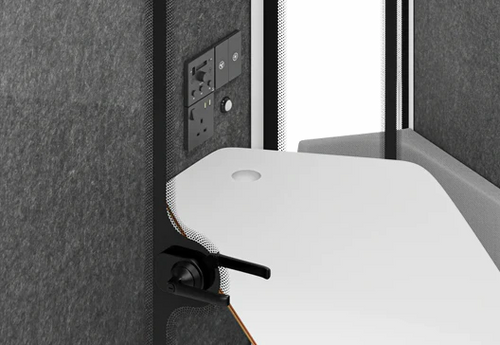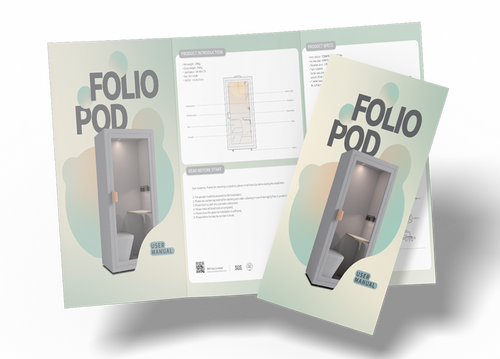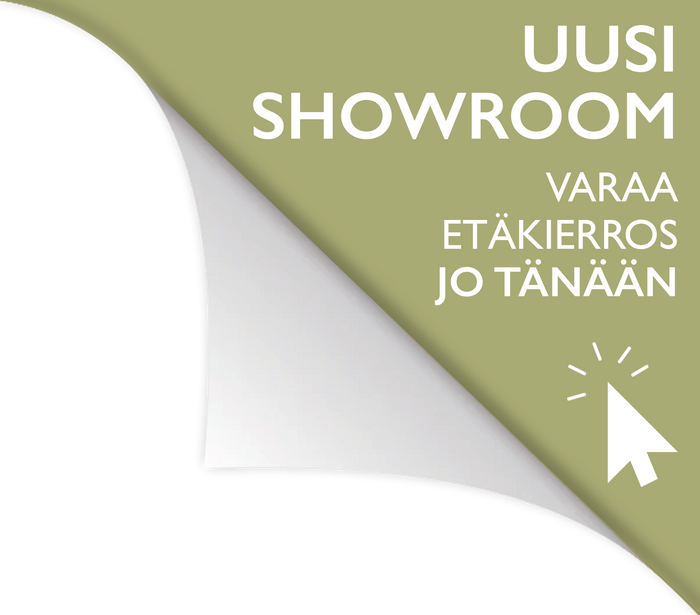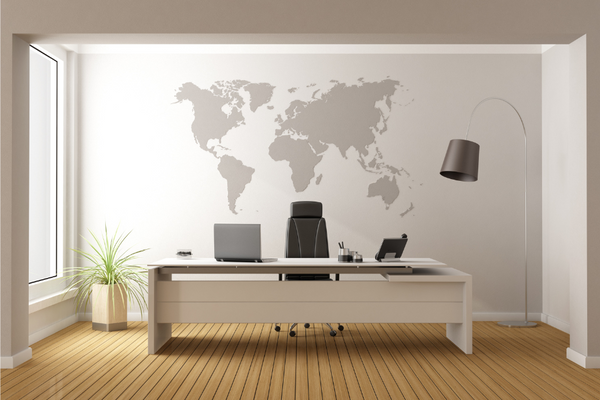Mixing Textures and Colors: Styling Tips for Accent Chairs in the Office
Choosing the right accent chairs for office interiors is a bit like picking the right shoes for an outfit — get it wrong and the whole look limps.
But get it right, and you’ve got a workspace that walks the walk. In today’s world of flexible office furniture and curated corners, accent chairs do more than offer a perch. They inject personality, define zones, and soften the sometimes sterile edges of commercial design. Whether you're outfitting a high-end reception or a tucked-away reading nook, texture and colour play a starring role in creating spaces that feel both stylish and strategic.
Now, we know the phrase “pop of colour” gets thrown around more than a swivel chair at a brainstorming session, but in the right hands — and paired with the right materials — it’s a game changer. A bouclé armchair in forest green, for example, might bring a plush contrast to a timber desk or concrete wall. Meanwhile, a leather accent chair can lend an executive edge without shouting for attention. The secret? Balance. Think of your palette and materials like a playlist: you want a bit of bass, a bit of treble, and nothing too screechy.
Blending office lounge chairs into your existing layout doesn’t require a full design overhaul either. Often, it’s about spotting the gaps — the forgotten corners, the awkward spaces between zones — and asking, What story could a chair tell here? When you layer in natural textures, tactile fabrics, and considered colour choices, you’re not just filling a spot, you’re anchoring a mood. That’s the magic of well-placed accent seating: it whispers intent without needing a name badge.
From breakout spaces to client-facing areas, the humble accent chair is having a moment — and rightly so. These aren’t just pretty perches; they’re design tools that help stitch together the many moods of a modern office. In the following sections, we’ll walk through how to style them with purpose, what materials work best where, and how to avoid clashing like socks and sandals at a board meeting.
Finding the Right Match: Colour and Texture Pairing That Works
Colour and texture — the office equivalent of tea and biscuits. One brings the flavour, the other brings the crunch. But unlike your mid-afternoon snack, you can’t just throw any old combo together and hope it lands. When working with accent chairs for commercial interiors, the aim is cohesion, not chaos. Start by looking at the broader office design palette: are you dealing with warm woods, cold metals, soft greys, or pops of corporate blue? Once you know your base notes, you can build harmony with contrast — a nubby bouclé chair against slick chrome legs, or rich velvet playing off exposed brick.
When it comes to colour, don’t be afraid of bold choices — but do be smart about where you place them. A mustard yellow lounge chair might lift a monochrome meeting nook, but plonk it next to a red filing cabinet and you’ve got more clashing than a morning train delay. The trick is to choose accent chair colours that complement your existing scheme, either through contrast (opposites attract) or tonal layering (shades of the same song). Think of it like painting a picture: your background needs to let your subject shine, not compete with it.
Textures, on the other hand, are your secret weapon. They're the unsung heroes that add depth, tactility, and a touch of “ooh, that’s nice” to otherwise plain spaces. Natural materials like linen, wood, and wool bring warmth to cooler spaces, while leather and metal offer structure and polish. Layering contrasting textures not only defines zones visually but also helps in curating the right acoustic and sensory experience. After all, no one wants to sit on something that looks good but feels like a park bench in winter.
Now let’s talk balance. Styling isn’t about making everything match — that’s how you end up with an office that looks like it was sponsored by beige. Instead, aim for visual rhythm. Pair heavier chairs with more open surroundings to avoid a “we ran out of space” look. Use textured office lounge chairs to break up clean, minimal environments. And never underestimate the power of the cushion: a simple velvet or felt accent can tie the room together like the final bow on a birthday parcel.
Finally, location matters. Don’t just think about how your accent chair looks — think about how it lives. Is it part of a breakout zone that gets daily foot traffic, or more of a decorative piece in a reception lounge? Use this to guide not only your material selection (durability is key) but also your colour commitment. A high-traffic hallway probably isn’t the best place for that dreamy cream wool chair, unless you fancy a side hustle in constant cleaning.
Here’s a quick cheat sheet to help style with intention:
- Bao Three-Seater Sofa (Emerald Velvet): A bold statement in rich jewel tones — perfect for private offices or luxe lounges. Pair with dark woods or brass fixtures to dial up the drama without tipping into theatrical.

- Petra Sofa with Walnut Frame: Understated elegance meets natural texture. Ideal for executive zones or boardroom lounges, especially when layered against stone, timber, or matte black finishes.

- Suelo Outdoor Sofa: Don’t be fooled by the name — this piece brings indoor-outdoor balance to wellness rooms, quiet terraces, or green breakout areas. Pair with planters and warm lighting to anchor biophilic design.

- Le Mura Two-Seater Sofa: Sculptural and subtly retro, this works wonders in collaborative nooks or creative corners. It contrasts beautifully with minimalist architecture or crisp white backdrops.

- River Sectional (Left Corner): Built for flexible zoning and larger lounge spaces. The soft curves and modular layout suit both relaxed breakout zones and more formal reception areas — especially when grounded in neutral palettes.

How to Create Standout Moments in Overlooked Office Spaces
Every office has them — those “not-quite-anywhere” zones. The awkward corners, the bare wall behind the printer, that stretch of hallway doing its best impression of a waiting room in limbo. These spaces often get left out of the design conversation, yet they’re bursting with potential. With the right accent chair styling, you can turn a design blind spot into a talking point — or better yet, a functional retreat.
Think of it like accessorising an outfit: a well-placed brooch or bold watch can completely change the vibe. The same goes for furniture in transitional spaces. An elegantly curved Sandra Lounge Chair or a sculptural Marenco Chair can anchor an otherwise forgettable area, creating moments of calm, inspiration, or even impromptu collaboration. Add a side table, throw in a floor lamp with warm light, and suddenly you've got yourself a mini sanctuary that invites people to pause — and not just to check their emails.
Here are a few ideas to make these overlooked areas sing:
Subtle Scene-Stealers: Quietly Powerful Placements
- Elevator lobbies: Add a bouclé accent chair beside framed artwork or signage for a polished, welcoming feel.
- Corridor cut-throughs: Pair a slimline chair with a vertical planter or a wall light to encourage movement and mood.
- Unused corners near windows: Pop in a high-back office lounge chair to frame the view and create a ‘thinking spot’.
- Behind reception desks: A tucked-in, plush seat offers overflow seating without cluttering the aesthetic.
- Between zones: Use bold-textured chairs to signal transitions from quiet workspaces to social areas.
Bold Moves for Brave Brands: Make a Statement
- Choose sculptural silhouettes like the Marenco Lounge Chair to inject artistry without overwhelming the layout.

- Layer textures with throws, cushions, or even acoustic panels to build a sensorial moment.

-
Contrast with colour — the Sesann Lounge Chair, with its sculptural form and earthy tones, stands out like a well-dressed guest at a beige buffet. In a sea of neutrals, it quietly commands attention (and compliments).

- Create photo-worthy moments in areas clients or guests frequent — think Instagrammable backdrops with seating that invites a snap.
- Use chairs as storytelling tools, showcasing sustainability, craftsmanship, or brand tone through material choices.
Remember: not every chair has to be functional in the traditional sense. Some serve a higher purpose — they elevate mood, sharpen your visual identity, and say something about your workspace culture without uttering a word. That’s the real trick of standout styling: it makes even the in-between spaces work harder, without breaking a sweat.
Next time you spot a blank wall or a forgotten alcove, don’t ignore it — treat it like a blank canvas. With a bit of colour, texture, and a dash of confidence, you can turn your quiet corners into bold design statements. After all, it’s not just about having a seat — it’s about having something to say.
Pulling It All Together: Keeping Cohesion with Mixed Styles
So, you’ve got your bouclé beauties, your sculptural showpieces, and your muted minimalists — now what? Mixing accent chair styles in the office is a bit like curating a good playlist: variety keeps it interesting, but if every track fights for the spotlight, you end up with a headache rather than a vibe. The goal here is balance — letting each chair have its moment while ensuring they all sing from the same design hymn sheet.
Start with a unifying thread. That could be a colour palette, a material finish, or a particular leg style that subtly ties everything together. If your reception lounge is going bold with deep-toned velvet chairs, echo the palette in quieter breakout zones using textured fabrics in similar hues. Or carry the same wood detailing across different silhouettes to build a sense of continuity without monotony. Remember, cohesion doesn’t mean carbon copies — it means clever echoes.
Another smart move? Let your layout do the heavy lifting. Zoning by function — meetings, lounging, individual focus — gives each style its own ‘stage’ without visual competition. This way, your accent chair design choices feel intentional rather than random, and visitors (or staff) intuitively understand how to use each space. Think of it as spatial storytelling — where the cast of chairs all play their part in the wider office plot.
And don’t be afraid to edit. More isn’t always more. A few well-chosen, well-placed chairs speak volumes compared to a scattergun approach. Give each piece room to breathe — especially in high-traffic areas — and let your boldest chairs shine where they’ll be most appreciated, like near entrances, waiting areas, or internal breakout lounges. That way, your design feels curated, not crammed.
As a final note, think long-term. Style should never come at the cost of comfort or durability. Opt for commercial-grade accent chairs that stand up to daily use while still delivering aesthetic flair. A beautifully styled workspace is one thing — but one that stays looking fresh and inviting over time? That’s the real win.


